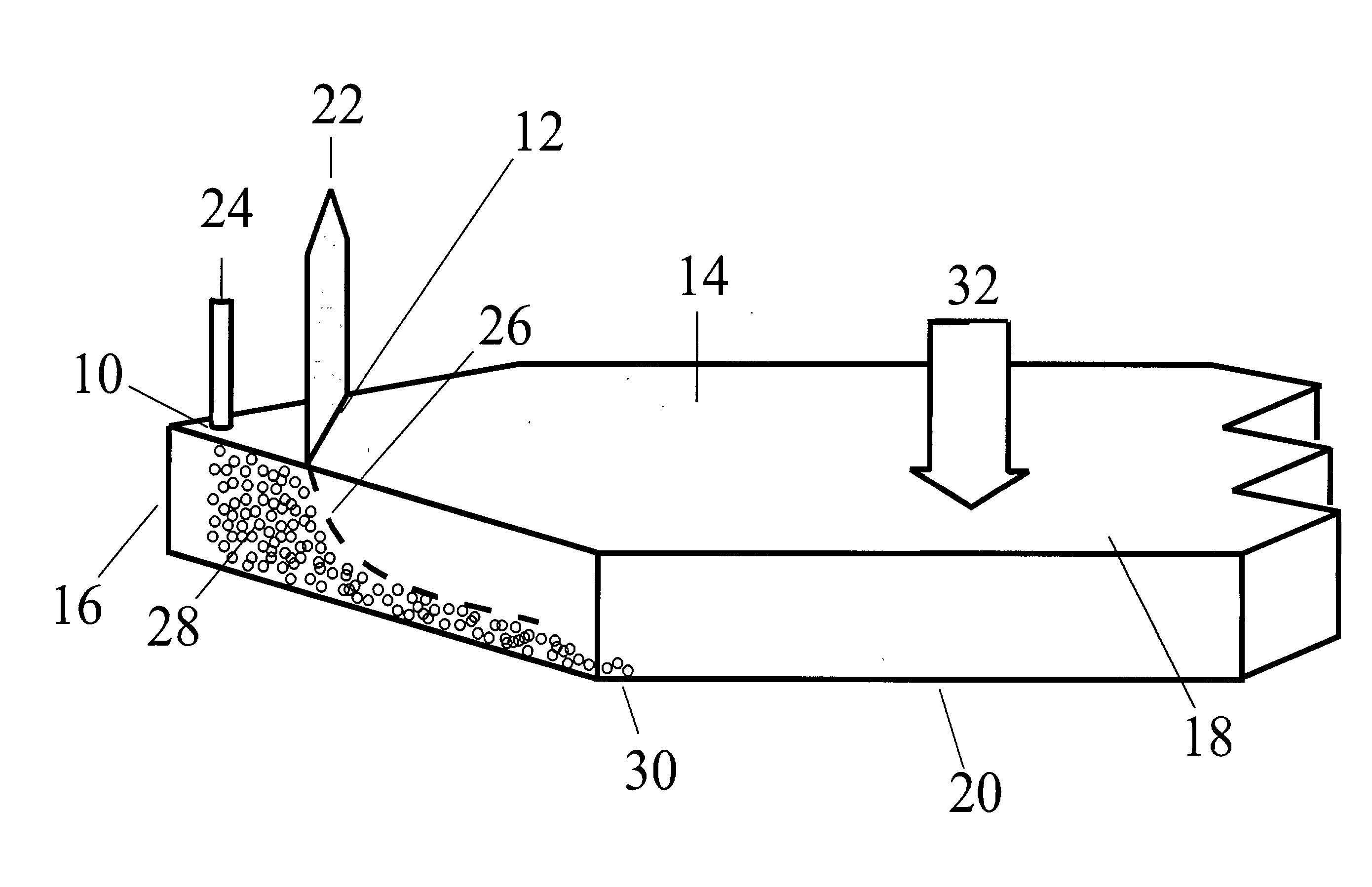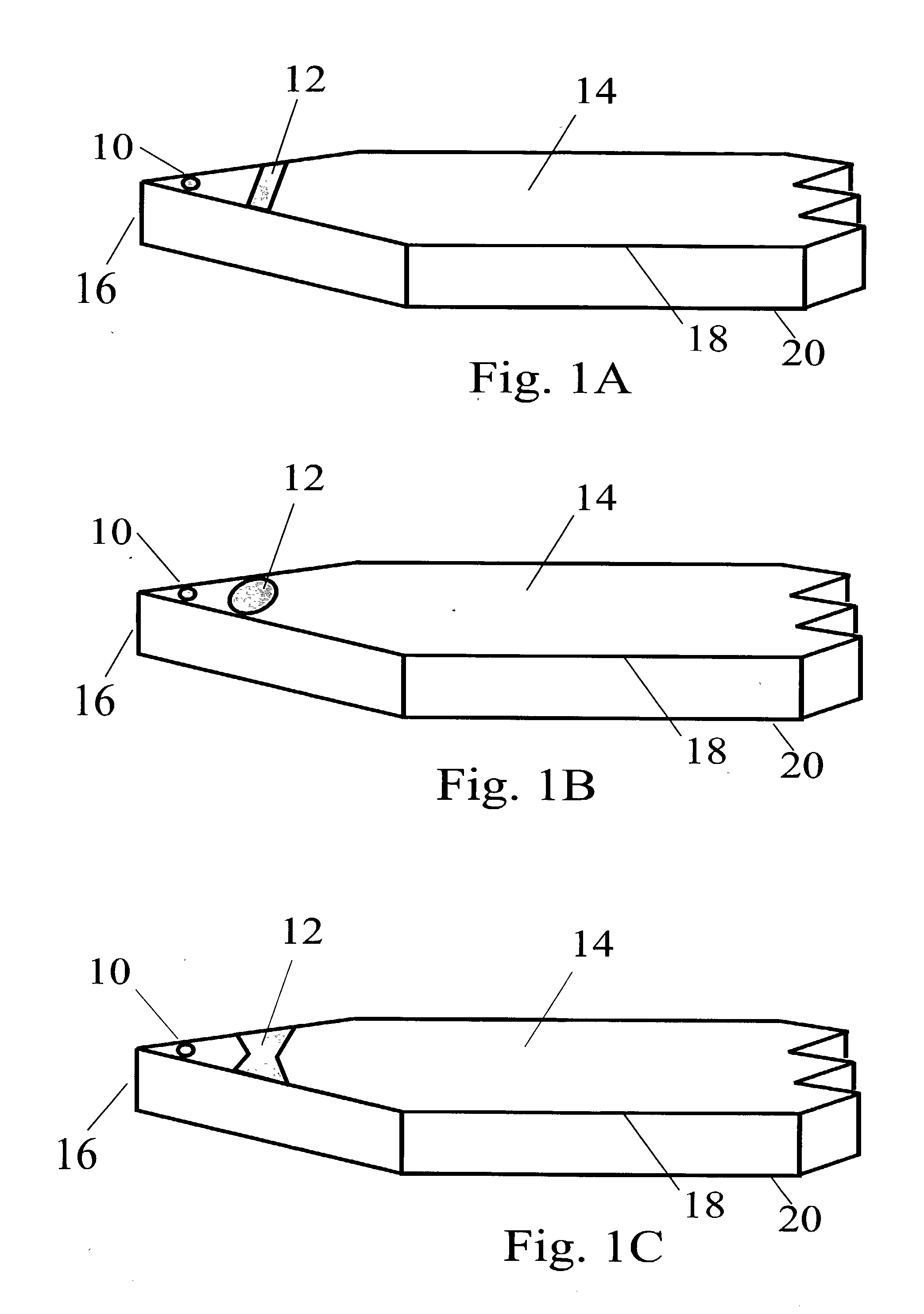Field-flow fractionation method and apparatus
a field-flow fractionation and apparatus technology, applied in the direction of component separation, water/sludge/sewage treatment, material testing goods, etc., can solve the problems of reducing separation resolution, not the only possible application of field-flow fractionation, and reducing the resolution of separation, so as to reduce the use, simplify the general construction of the separation channel, and limit the presence of foreign elements
- Summary
- Abstract
- Description
- Claims
- Application Information
AI Technical Summary
Benefits of technology
Problems solved by technology
Method used
Image
Examples
Embodiment Construction
[0160] The implementation of the liquid introduction and removal splitting devices should be relatively simple as illustrated in FIG. 8. For channels having a flat, planar structure in which plates are used to form the top and bottom channel walls, an additional layer of a spacer and a plate can be attached to the top channel plate. FIG. 8 illustrates the construction of an asymmetrical flow FFF channel which is modified to include a liquid introduction device. Modification of typical symmetrical flow FFF, thermal FFF, and electrical FFF channels would involve similar construction methods.
[0161] A channel cavity 14 is formed by using a channel spacer 64 consisting of a 0.025 cm thick film of Mylar with the channel shape cut out of it. The channel shape is tapered with triangular end pieces. The apex of each triangular end piece is co-linear with the center line of the channel. The initial and final breadth dimensions of channel 14 are 20 mm and 1 mm, respectively. The channel length...
PUM
 Login to View More
Login to View More Abstract
Description
Claims
Application Information
 Login to View More
Login to View More - R&D
- Intellectual Property
- Life Sciences
- Materials
- Tech Scout
- Unparalleled Data Quality
- Higher Quality Content
- 60% Fewer Hallucinations
Browse by: Latest US Patents, China's latest patents, Technical Efficacy Thesaurus, Application Domain, Technology Topic, Popular Technical Reports.
© 2025 PatSnap. All rights reserved.Legal|Privacy policy|Modern Slavery Act Transparency Statement|Sitemap|About US| Contact US: help@patsnap.com



